The most confounding concept in rugs is “warp depression”, so I created a structures page with a bunch of annotated photos to explain it and give suggestions.
Before a rug is woven the warps are strung on the loom, and the warps can be made to lay in one plane, side by side. But warps can also sit on two planes where they alternate. Here is a rough diagram.
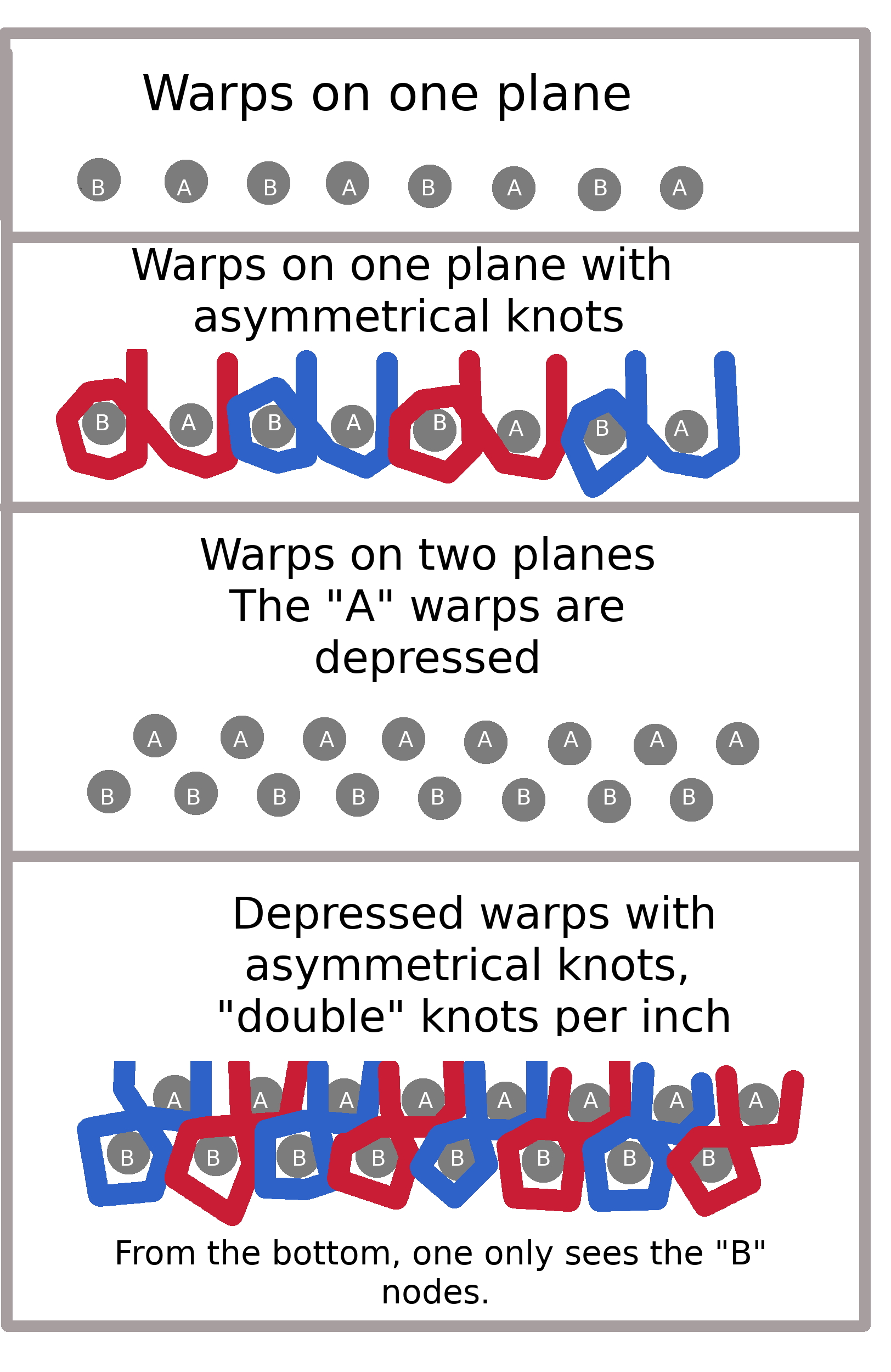
This post began in 2017 when I saw this cut rug revealing warps on two planes.
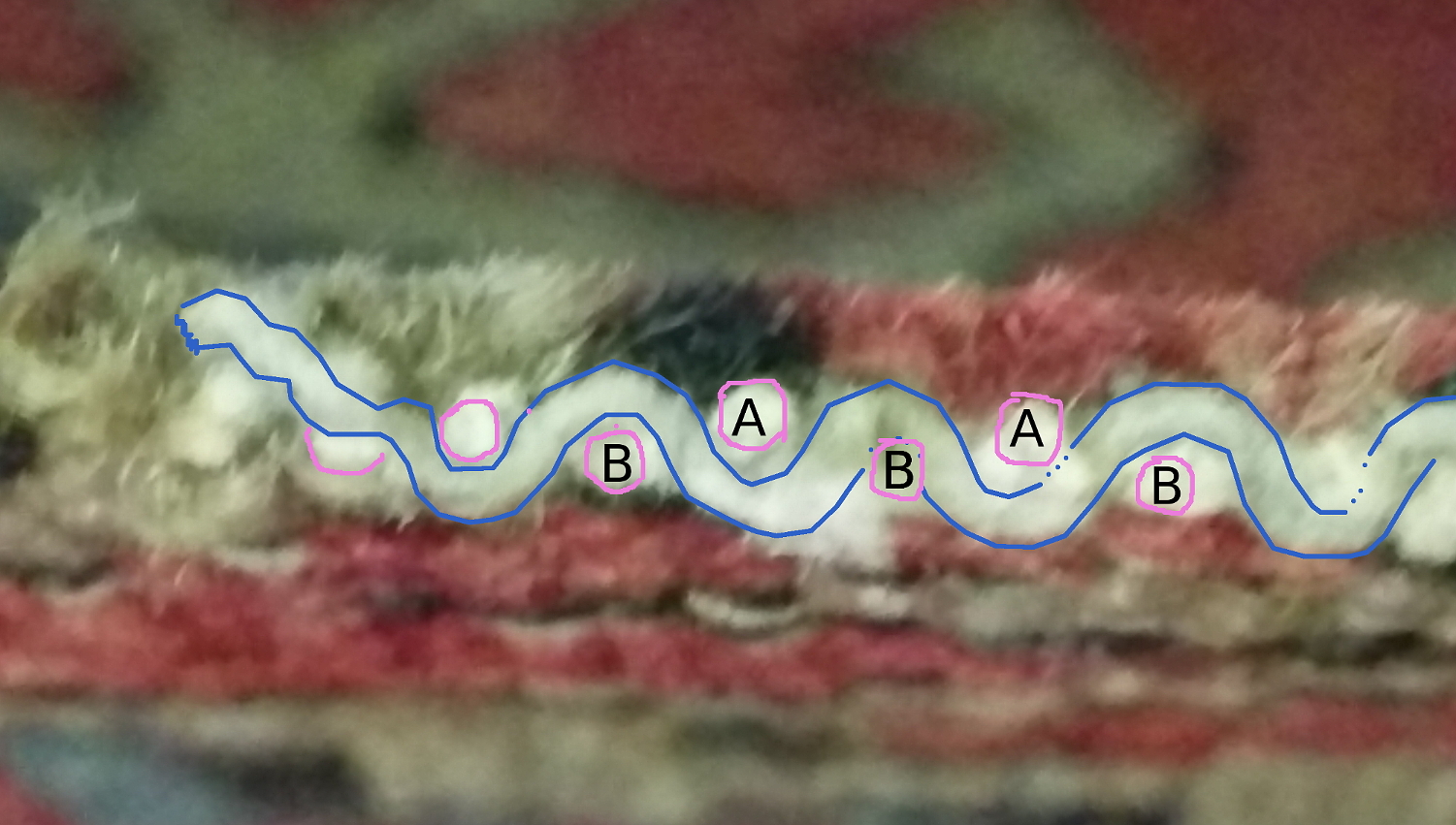
Here are some examples:
No warp depression:
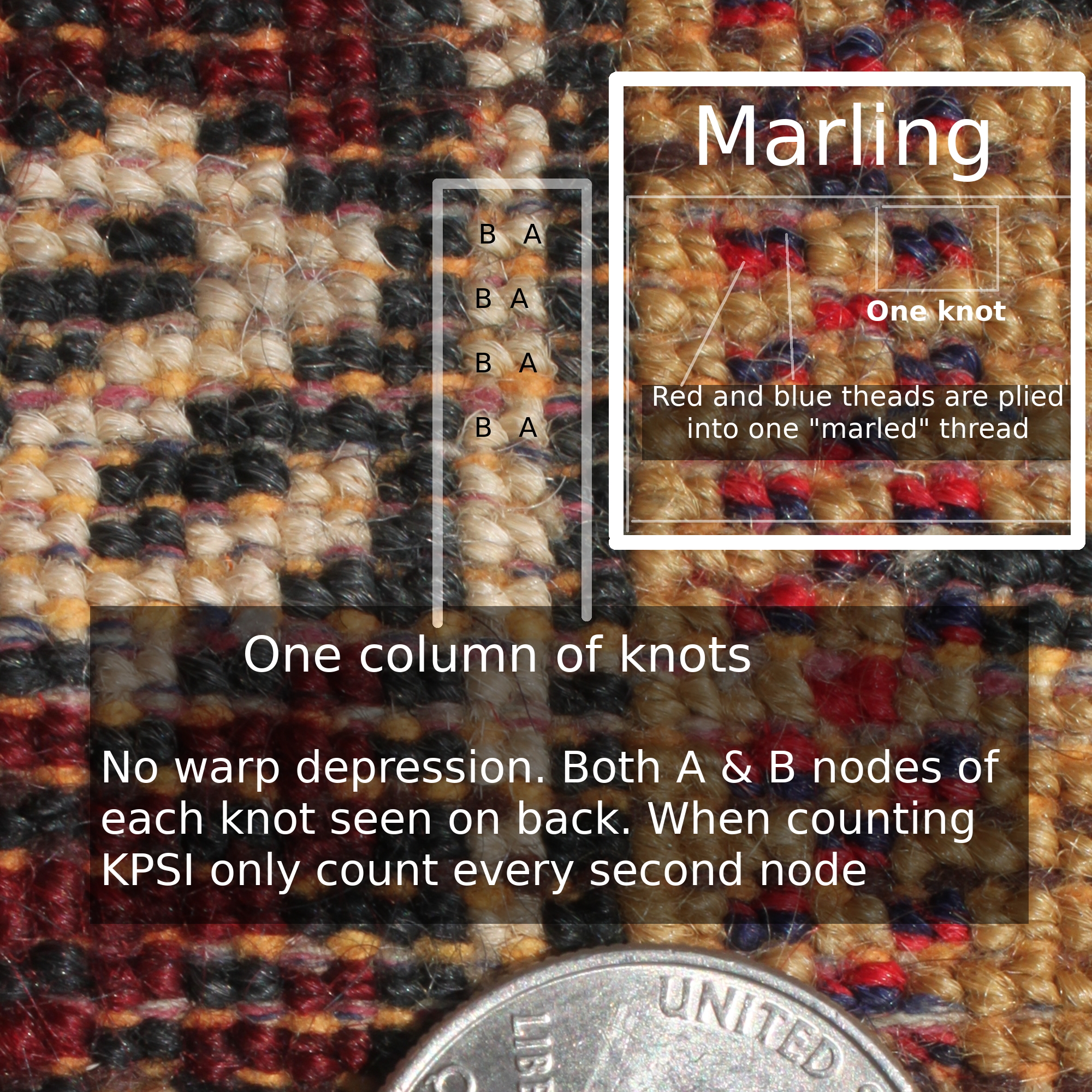
Rug 779 Herat Friday Mosque with Armored Column
Minimal warp depression, offset by 20-30 degrees:
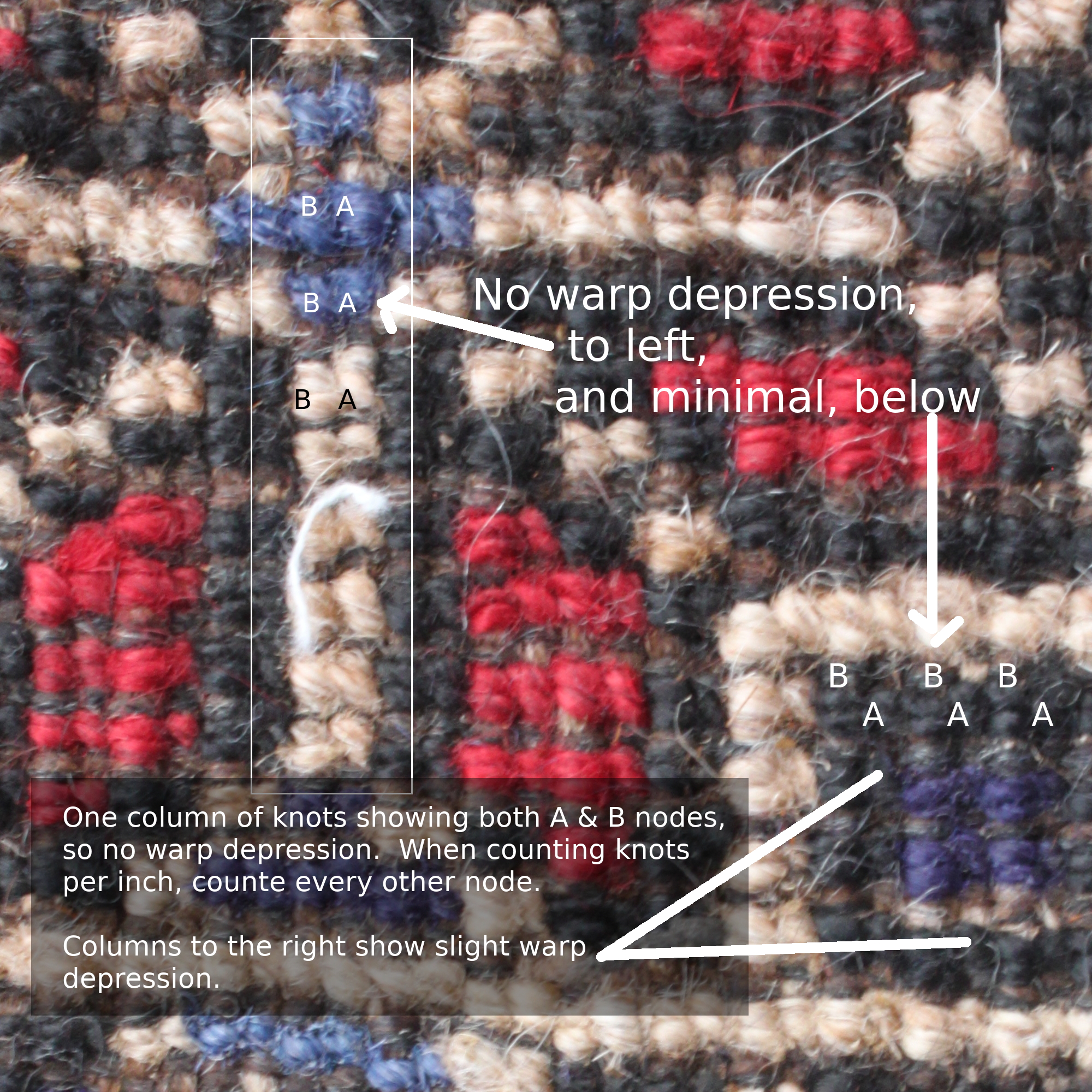
Rug #464 Bright Color Landscape Rug
Moderate warp depression, offset by 45-60 degrees, corduroy texture
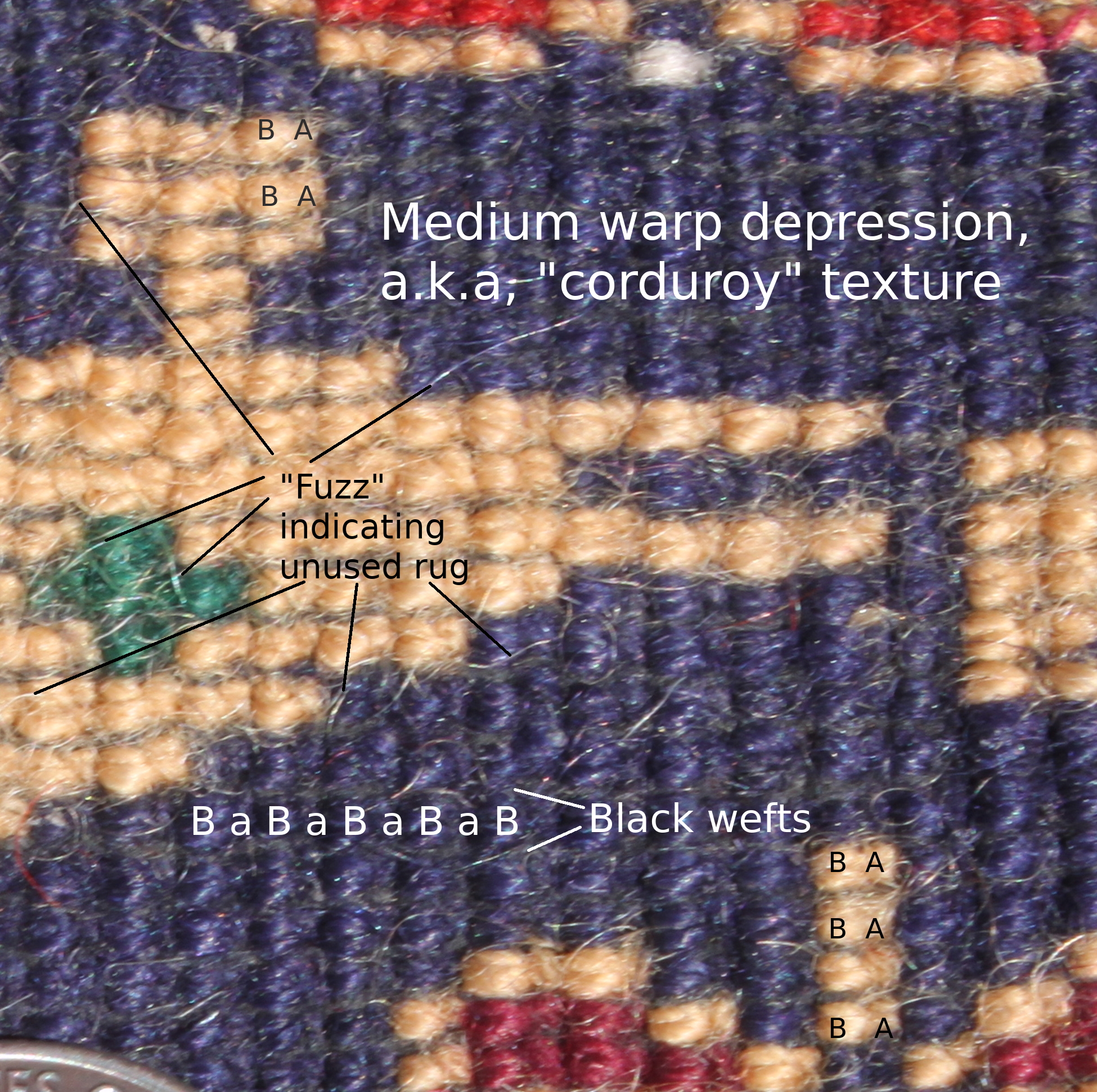
Rug #925 Baleschet Saddle Bag with Motorcycle
Also, medium warp depression, offset by 45-60 degrees, with pronounced corduroy texture
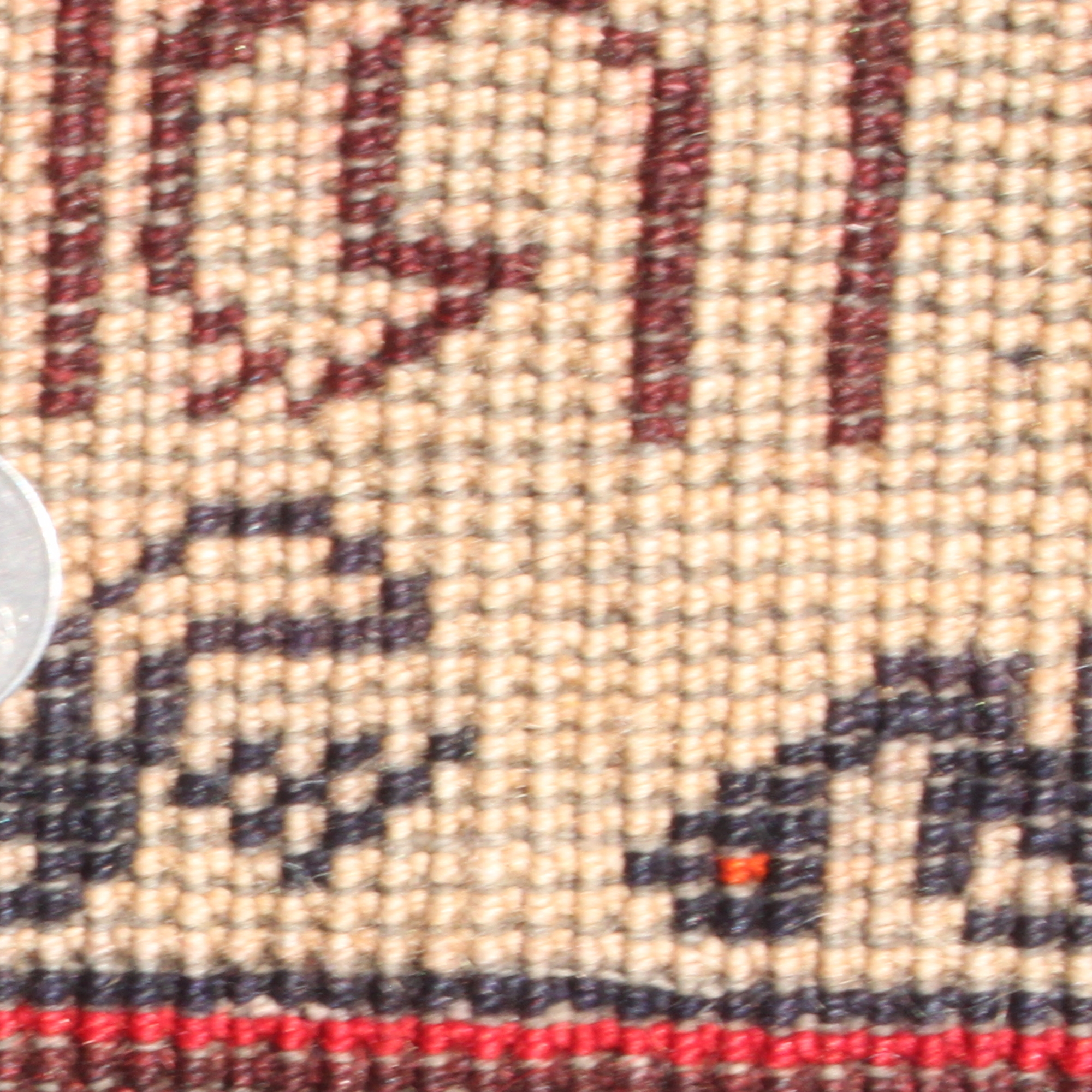
Rug #1614 Classic White Background Amman Ullah Khan Rug
Full warp depression, a.k.a. “double knotted”, where the second warp is buried in the rug’s foundation:
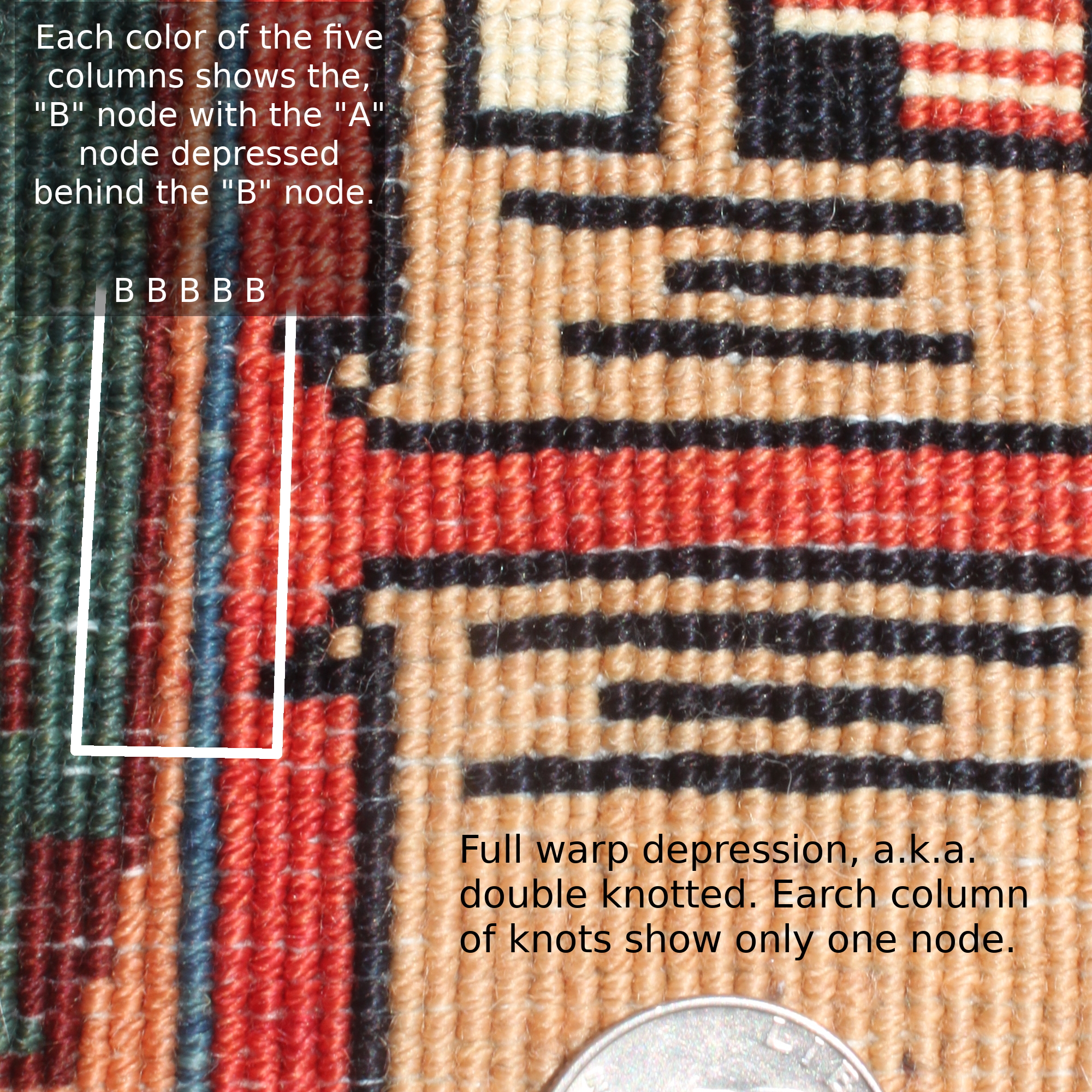
Rug #1105: B-52 Medallions with Cluster Bombs and MRE’s
If this post clarifies warp depression, or if it just raises more questions, please let me know.

